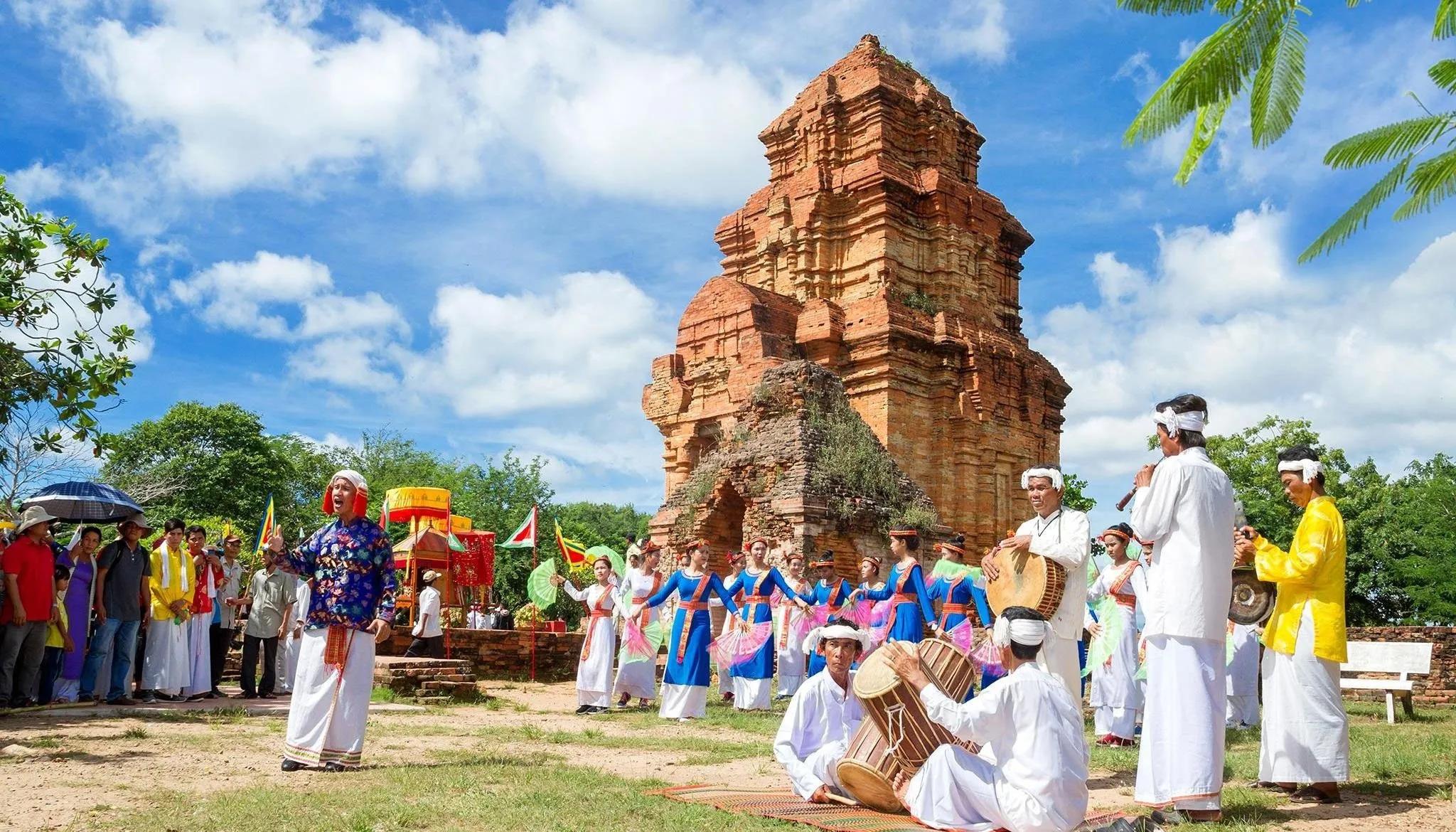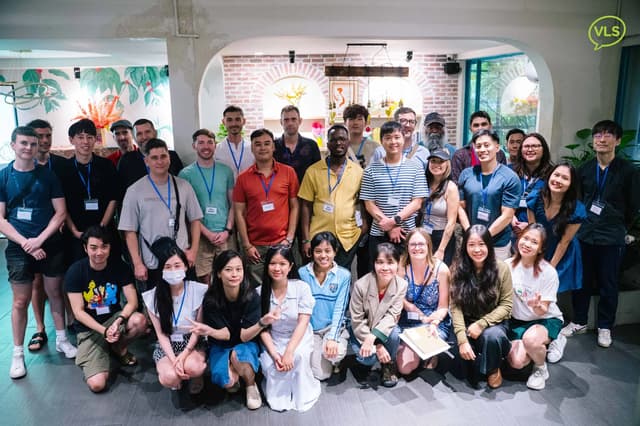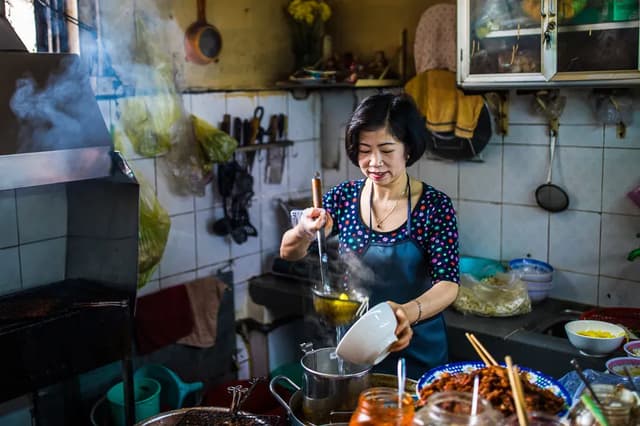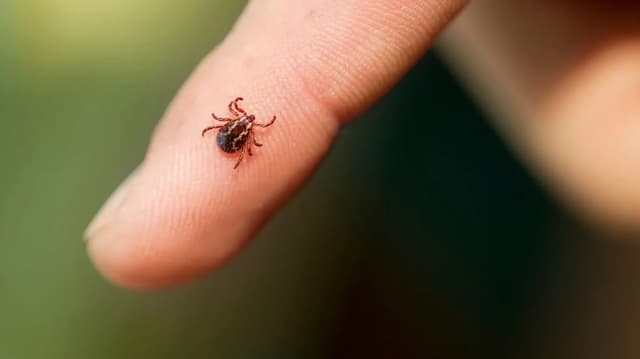Traditional culture of the Cham people
25/12/2024
Vietnamese ethnic groupsExplore the diverse cultural identity of the Cham people in Vietnam with unique rituals and architecture.

As a culture imbued with national identity, the traditional culture of the Cham people is very famous in the Southeast Asian region. Although it has undergone many changes over time, the Cham people still retain the cultural values left by the ancients. Moreover, our Party and State are also very interested in preserving the cultural identity of this ethnic group. Let's find out information about the Cham people in Vietnam with iGuide.ai!
Historical origins
Other names: Cham, Chiem, Chiem Thanh, Champa, Hoi... Local groups: Cham Hroi, Cham Poong, Cha Va Ku, Cham Chau Doc.
Population
178,948 people (According to the survey data of 53 ethnic minorities on April 1, 2019).
Language
The language belongs to the Malayo-Polynesian language group (Austronesian language family).
History
Cham People and Their Long-standing Culture
The Cham people, who have been living in the central coast of Vietnam for a long time, have created a brilliant culture with profound influence of Indian culture. As early as the 17th century, the Cham people built the Champa kingdom.
People and Beliefs
Currently, the population consists of two main groups: The group residing in Ninh Thuan and Binh Thuan mainly follows Brahmanism (a small group of Cham people here follow traditional Islam called Cham Bani). The group residing in some localities in Chau Doc, Tay Ninh, An Giang, Dong Nai provinces and Ho Chi Minh City follow the new Islam.
Production Activities
The Cham people have a tradition of wet rice farming, are good at irrigation and orchards. Besides wet rice farming, there is still a type of dry rice farming on the mountain slopes. The Cham people in the South mainly live by fishing, weaving and small-scale trading, farming is only secondary.
Crafts and Trade
The crafts developed in the Cham region are famous for silk weaving and hand-molded pottery fired in open-air kilns. Trade with neighboring ethnic groups has existed since ancient times. The central coastal region was once the location of famous naval fleets in history.
Cultural life
Cham cuisine
The Cham people have the habit of eating rice, with rice cooked in large and small earthenware pots. The daily menu includes fish, meat, and vegetables, which are the results of hunting, gathering, raising animals, and growing crops. Can wine and rice wine are popular drinks. The custom of chewing betel and areca nuts is an indispensable part of the daily life and traditional customs of the Cham people.
Traditional Costume
The Cham people have a unique traditional costume, with both men and women wearing a long skirt. Men usually wear a short, buttoned blouse, while women wear a long pullover. White cotton fabric is the main color in traditional costumes. Today, in daily life, the Cham people dress similarly to the Vietnamese in the Central region, however, the long pullover still appears in the wardrobes of elderly women.
Housing Features
The Cham people mainly reside in Ninh Thuan and Binh Thuan, usually living in earthen houses (ground-floor houses). Each Cham family has a scientific and close-knit organization of their house: a guest house, the house of the parents and young children, the house of the married girls, along with the kitchen and the communal house, which includes the granary and the bridal chamber, which is also the residence of the youngest daughter and her husband in the family.
Means of transport
The traditional and popular means of transportation of the Cham people is the basket carried on their backs. The Cham people are famous for being highly skilled boat builders, serving activities on rivers and seas. In addition, they also make large-capacity ox-drawn carts and buffalo-drawn carts to transport goods overland, demonstrating their ingenuity and creativity in daily life.
Social relations
Cham families have a matriarchal tradition, although Cham society was formerly a feudal, class society. In areas following Islam, although the family has shifted to patriarchy, the role of men is emphasized, matriarchal customs still exist quite strongly in family and clan relationships with ancestor worship.
Cham people were originally divided into two clans: Cau and Dua, like the Niee and Mlo lineages of the Ede ethnic group. Later, the Cau clan became the class of commoners, while the Dua clan became the class of nobles and clergy. Below the clan were the maternal lineages, headed by a woman from the youngest lineage. Each clan had many branches. Traditional Cham society was divided into castes like ancient Indian society. They had separate areas of residence and had clear barriers: they were not allowed to establish marriage relationships, did not live in the same neighborhood, did not eat from the same tray...
Rituals and customs
Wedding customs
In Cham culture, women take the initiative in love affairs. Marriages are traditionally lived in the wife's family, and children bear the mother's surname. The bride's family provides for the bride price, reflecting traditional matriarchal ideology. Cham families maintain a monogamous marriage model, emphasizing stability and sustainability in family life.
Funeral customs
The Cham people have two ways to send their deceased to the afterlife: burial and cremation. The group of residents who follow Brahmanism often choose cremation according to religious law. Meanwhile, other groups of residents practice burial. Notably, people in the same clan are buried in the same place, maintaining the tradition of following the maternal bloodline.
New house building ceremony
The Cham people in Ninh Thuan and Binh Thuan have elaborate rituals when building a new house. First is the ceremony to worship the Earth God to cut wood in the forest. After the wood is transported to the village, a tree welcoming ceremony is held. Finally, a wood punishment ceremony is held to start the construction of the house, like a musical opening for a new journey in life.
Festivals and agricultural rituals
The Cham people perform many agricultural rituals throughout the year, such as the canal-building and dam-building ceremony, the rice-planting ceremony, the rice-growing ceremony, and the rice-growing ceremony. But the most notable is the Bon Kate ceremony, a large festival held in the middle of the tenth lunar month at the temples and towers, creating a solemn and dignified atmosphere throughout the region.
Calendar and time in Cham culture
The Cham people use a traditional agricultural calendar based on the lunar calendar. This calendar not only regulates the time for agricultural activities but is also an important tool in organizing traditional festivals, creating a unique rhythm of life in Cham culture.
Education and arts
The Cham people had a writing system very early. There are many inscriptions and scriptures in Cham script. Cham script was created based on the Sanskrit writing system, but the use of this script is still very limited among the clergy and the ancient nobility. Learning and passing on skills are still mainly oral and imitative. Prominent Cham musical instruments include the Paranung drum, clapping drum, and xaranai trumpet. The Cham folk music and ancient music have left many influences on the folk music and ancient music of the Vietnamese in the Central region such as the rice drum, nam ai music, Hue singing and dancing... Cham folk dance is seen in the Bon kate festivals held at the temples and towers.
Fun activities
Children love to play top spinning tops and kites, play mock battles, capture the flag competitions, and play blind man's buff.
Unique features in culture
Cultural diversity of the Cham people
The Cham ethnic group, one of the diverse and unique ethnic minorities in Vietnam, not only possesses a distinctive culture, but also makes an important contribution to the country's ethnic diversity and richness. With a long history and independent cultural development, the Cham ethnic group is an indispensable part of the Vietnamese cultural landscape.
Geographical and linguistic distribution
The Cham people are mainly present in the Central and Central Highlands provinces of Vietnam, including Ninh Thuan, Binh Thuan, Dak Nong and neighboring areas. With their unique language, customs and traditional costumes, the Cham people have created a unique and rich culture. The Cham language is used daily, and it has become an indispensable part of the daily life and communication of the Cham people.
Cultural heritage and crafts
The culture of the Cham people is reflected in many special cultural heritages. In architecture, the Po Nagar Temple, Po Klong Garai Cham Tower and Po Rome Tower are famous architectural works, demonstrating the talent and fine arts of the Cham people. In addition, the Cham people also preserve and practice traditional handicrafts such as net weaving, brocade weaving, and ceramics, creating unique and sophisticated products.
Government and social organization attention
The preservation and maintenance of the Cham ethnic cultural heritage has received deep attention and active support from the government and social organizations. This is not only a conservation work but also a journey to protect and develop the precious values of Cham culture. Research, preservation and restoration activities have been systematically implemented, along with the organization of educational and training programs on Cham culture as an indispensable part of transmitting and promoting this unique cultural heritage.
Motivation from projects and practical activities
Organizations and authorities have proactively implemented a series of projects and activities to protect and enhance Cham cultural heritage in the modern context. These projects have created favorable conditions for the community to deepen their understanding of the culture, traditions and history of the Cham people. In particular, the focus on archaeology and restoration of architectural works, temples, and tombs is an essential part of preserving these significant historical heritages.
Contribution of Cham culture to social development
The Cham people not only possess a unique and rich culture but also contribute significantly to the diversity and development of the cultural landscape in Vietnam. The preservation and development of Cham culture not only ensures cultural freedom and cultural diversity for the Cham community, but also serves as a foundation for building a fair, multicultural society where everyone is united and lives together in peace.
Above is some interesting information about the Cham people in Vietnam. Let's plan to explore, meet and experience the culture of the Cham people in the near future with iGuide.ai!
Source:
- Ethnic groups in Vietnam (National Political Publishing House Truth)
- Basic characteristics of 54 ethnic minorities in 2019 (Committee on Ethnic Minorities and General Statistics Office)
- Website of the Ethnic Committee, Website of Nhan Dan Newspaper
- Survey results collect information on the socio-economic status of 54 ethnic groups in Vietnam)
Essential Vietnamese Phrases for Tourists: A Guide to Communicating in Vietnam
By Admin
04/10/2024
Start your Vietnam adventure with confidence by mastering key phrases that will enhance your travel experience. While fluency is not required, knowing essential expressions can improve your safety and interactions with locals, providing a deeper connection to Vietnam’s rich culture. From basic greetings to directions, these phrases will help you communicate effectively and show respect for local customs. Take the opportunity to enrich your trip by engaging in Vietnam’s vibrant language and traditions.
Mẹo an toàn thực phẩm và nước uống thiết yếu cho du khách ở Việt Nam
By Duc Anh
04/10/2024
Culinary Journey
Khám phá những mẹo quan trọng về an toàn thực phẩm và nước để nâng cao trải nghiệm du lịch của bạn tại Việt Nam. Tìm hiểu cách chọn lựa các lựa chọn ăn uống an toàn, xử lý sản phẩm tươi sống và điều hướng an toàn nước để có một chuyến đi không phải lo lắng.
Ways to prevent ticks and lice
By Duc Anh
04/10/2024
Learn effective ways to minimize exposure to ticks and protect against tick-borne diseases. Discover how to prevent tick bites before and after outdoor activities and implement landscaping techniques to create a tick-safe environment around your home. Stay informed and safe during peak tick activity months.
Comprehensive Guide to Tick Bite and Lyme Disease Prevention
By Admin
04/10/2024
Discover effective ways to prevent tick bites and Lyme disease with our comprehensive guide. Learn about personal protective behaviors, the importance of regular tick checks, and how to use effective tick repellents. Discover insights into tick behavior, best practices for tick removal, and safe repellent options for maximum protection during outdoor activities.




